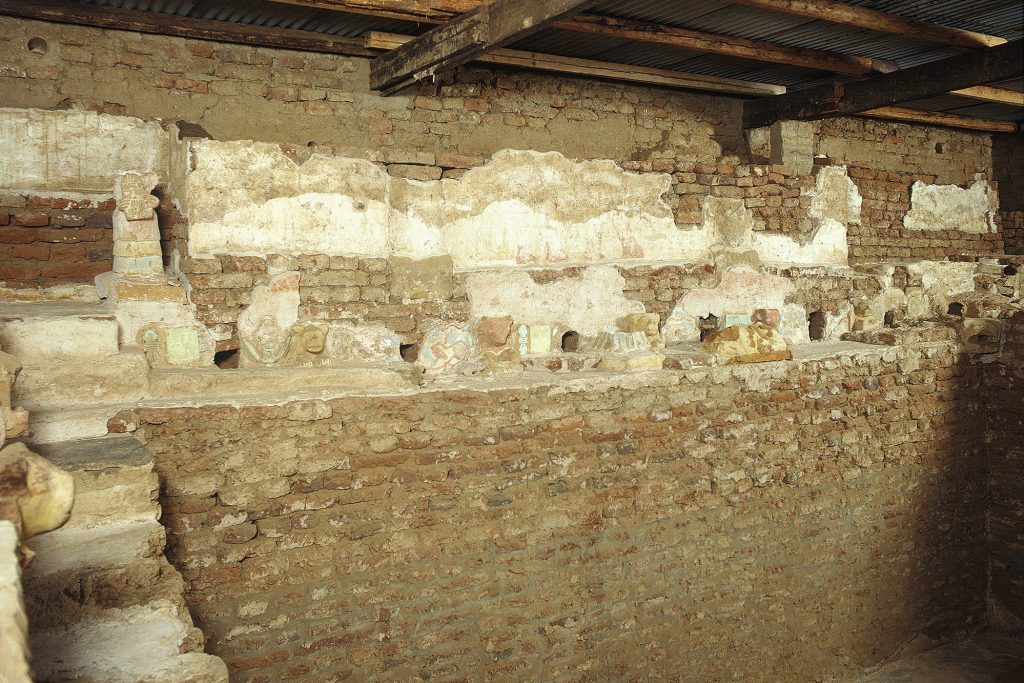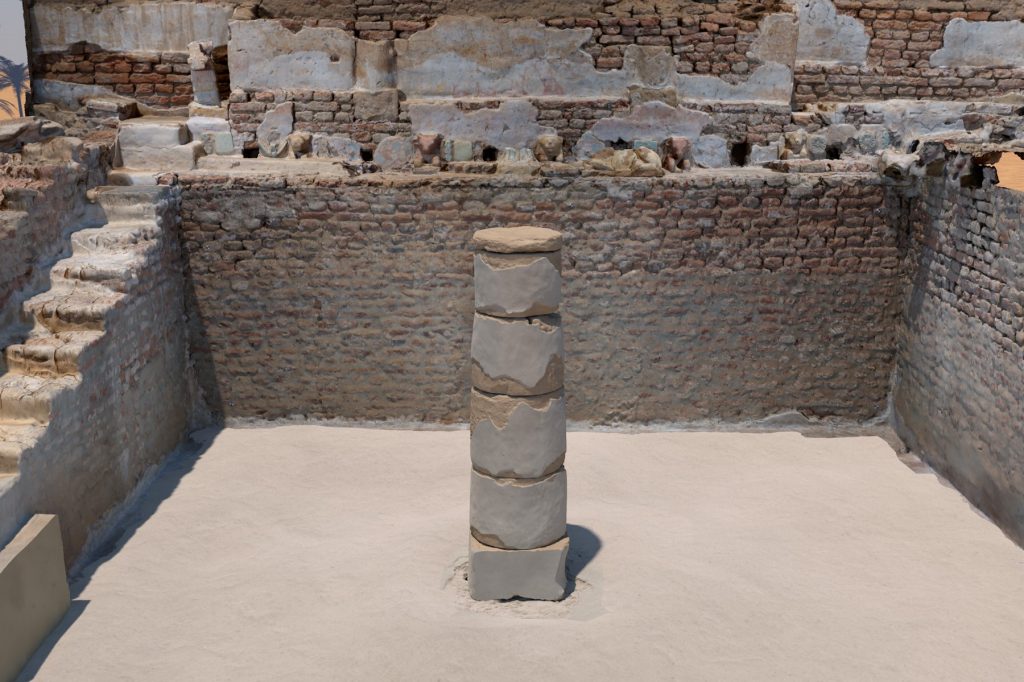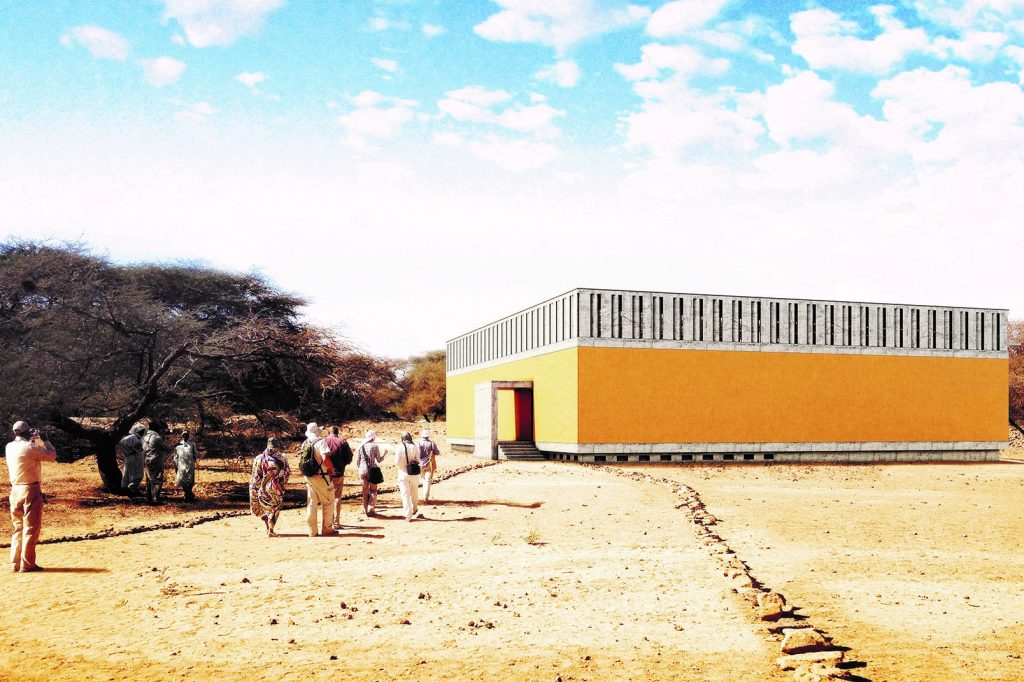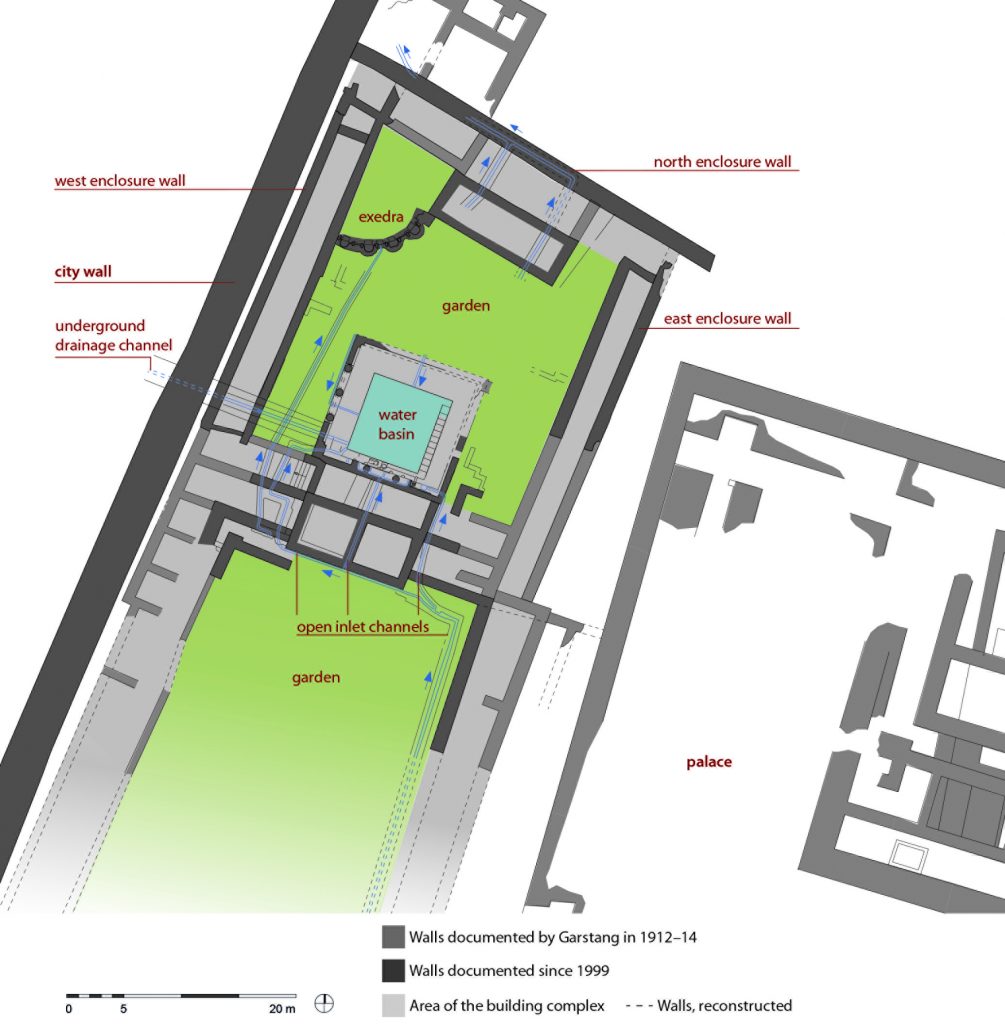Meroë Royal Baths, Sudan



The ancient city of Meroë is located 200 km / 130 miles north of Khartoum in the Middle Nile Valley. Here the region between the 5th and 6th cataracts from 300 BC to 350 AD has been the heartland of the African empire of Kush. During the centuries around common era building activity flourished at the residential city of Meroë and at that time also the Royal Baths have been built next to the royal palaces.
The building is without parallel in the meroitic empire. It has a water basin of 7 m by 7 m and 2.40 m depth and an exedra with four majestic seats surrounded by a garden with open water channels leading to the basin. In front of a show-wall richly decorated with sandstone sculptures, faïences and wall paintings and from a column in the centre of the basin water flew into the basin.
This unique building is an important testimony for the cultural transfer between the Mediterranean and sub-sahara Africa around common era. Besides the staging of the element water also the images of music, dance, and wine attracted the attention. The representations in part derive from Greek Dionysian motives that are explicitly integrated into indigenous imagination. The ideas are stimulated by contacts of the Meroitic kingdom with their northern neighbours, the Ptolemies at Egypt, the Hasmoneans in the Levant, and the Romans. Thus the Royal Baths stand for gladsome feasts, welfare and fertility being placed under the protection of the gods.
Since 1999 the DAI and the Sudanese Antiquities Organisation jointly investigate the complex, the development of the buildings, its features, the water installations, and the significance of the place belonging to the World Heritage. After continuous conservation measures a new protective building to preserve the site and to allow an attractive visit will be erected.
Members

Dr. Simone Wolf
DAI Berlin Head Office
simone.wolf@dainst.de

Dr. Hans-Ulrich Onasch
DAI Berlin Head Office
hans-ulrich.onasch@dainst.de
Partner organisation

National Corporation for Antiquities and Museums (NCAM)
Khartoum, Sudan
Figure Captions
Fig. 1 View of the water basin of the Royal Baths with the richly decorated wall [© DAI, Meroë
Royal Baths Projekt (D-DAI-Z-MRB_20010100_MF-0911, H.-U. Onasch)].
Fig. 2 Simulation of the water basin area of the Royal Baths in ancient times, 3D model based on 3D
scanning und photogrammetric documentation [© DAI, Meroë Royal Baths Projekt (D-DAI-
Z-MRB_20170000_3D-0001, K. Aldenhoven, H.-U. Onasch, TrigonArt Berlin)].
Fig. 3 Design of the new protective shelter for the Royal Baths by Kéré Architecture, 2015 [© DAI, Meroë
Royal Baths Projekt (Kéré Architecture, Berlin)].
Fig. 4 Schematic plan of the Royal Baths in Meroë, 2015 [© DAI, Meroë Royal Baths Project (E. Richter,
based on plan J. Garstang 1912-1914 and data of the MRB-project)].
